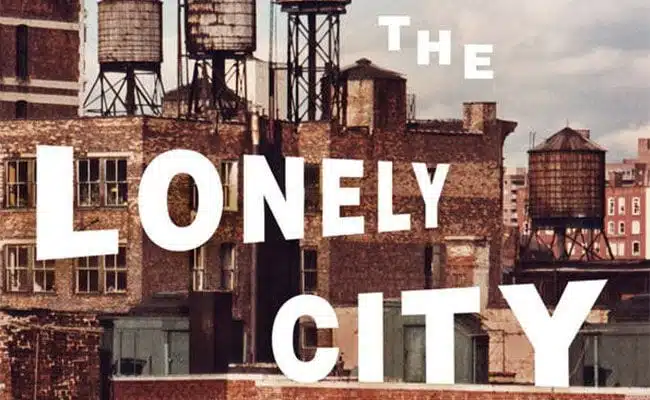
Olivia Laing opens the The Lonely City by telling us that she moved to New York City in the recent past, a difficult period in her life. “You can be lonely anywhere, but there is a particular flavour to the loneliness that comes from living in a city, surrounded by millions of people.” This is not a particularly unique thought and the idea of New York as both a bustling and alienating place is an old one. But Laing asks us to dwell on and deepen our appreciation of what this loneliness actually looks like, a condition she feels is rarely examined seriously due to our uncomfortableness with the topic and a lonely person’s tendency to simultaneously isolate and repel those around them.
As a critic Laing delves into her topic by examining the lives and works of a select group of artists who explored modern urban isolation and who touched her during her period in New York. (All of the artists were/are based in New York, except for Harvey Darger, in Chicago.) The book mixes art criticism and memoir, effectively synthesizing these two modes of writing so that the personal elevates the analysis, with a sizable emotional heft.
She starts by examining what it means to look at loneliness, while researching the history of psychiatric and psychological research on the topic, which she finds has had a “near-phobic dislike” of tackling it head on. In art, she has a neat corollary in Edward Hopper, the creator of some of the most iconic images of modern alienation, who nevertheless became testy whenever anyone asked him about the theme in his work. After considering the perspectives and blocking of his images, she finds an empathetic quality in his paintings, something “beautiful as well as frightening” that becomes the springboard for what follows.
She subsequently looks at different aspects of being lonely: against society, individuals, against oneself and one’s body. In a perceptive chapter on an overworked subject, she compares and contrasts Andy Warhol and the writer who shot him, Valerie Solanas, through their relationship with words and language. She looks at their struggles to communicate and how the act of conversation can walk a delicate line between connection and estrangement.
Laing seems to have formed the deepest connection with David Wojnarowicz, the late 20th century artist and AIDS activist. She works her way through his archives at New York University and finds inspiration in a life “spent trying to escape solitary confinement of one kind or another, to figure a way out of the prison of the self.” She says that he tried to do so through Art and Sex and uses this consideration to examine the fragility and strength of the body, how it can be freeing, confining, a weapon against an oppressive mass, and a loving connector that frees bodies from their own prisons.
In this section she effortlessly weaves in considerations of Greta Garbo’s final years in New York, Nan Goldin’s photography, and Alfred Hitchcock’s Vertigo. In subsequent chapters she writes about the performer Klaus Nomi, the development of AIDS activism in New York, internet entrepreneur Josh Harris, and Jean-Michel Basquiat. She builds her own city of loneliness within the existing city, and the artists from past chapters, particularly Warhol and Wojnarowicz, keep returning and mingling, deepening and humanizing her work, recruited into a group portrait that forms a loosely connected community of outsiders and struggling souls.
Laing does not claim to, or even want to, cure the world of loneliness. It’s a constant that we all have to live with and a harbinger of the death that we would all rather avoid. But it does not need to be a cliché. Instead, in the moving closing, she rails against the “gentrification that is happening to the emotions”, which sees something like loneliness as “a problem to be fixed”. Instead, she makes a case for empathy and kindness, for staying diligent and alert, for ourselves and in solidarity with others. As any good artist must do.

